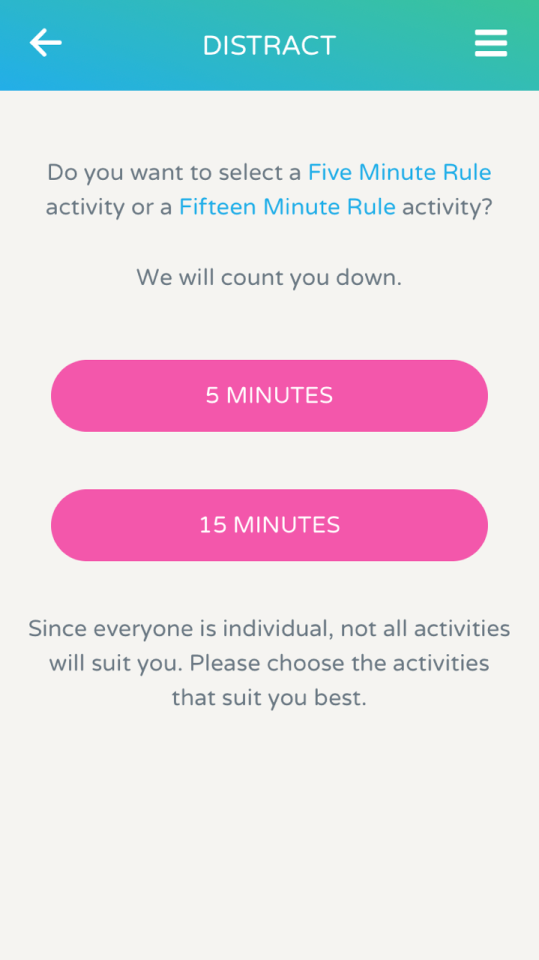Australopithecunt - The Biggest Haw To Ever Yee

More Posts from Australopithecunt and Others
as the quality of everything in the world decreases, the quality of pictures of cats increases tenfold, and the rise has been exceptional for the past two years
cowboys were a sort of itinerant warrior class common in meiji-era texas
the fact that there are still claimants to the Hapsburg line is so funny to me. if I found out I was a Hapsburg, I would not mention that to a soul.
As Elon Musk cements his place in history as a fascist tech overlord and the rest of the world looks at us in horror, I really do want to reiterate what I feel will be lost to the history books
Nearly everyone in america has thought and continues to think that Elon is very cringe.
Listen up. There is literally an app that can help you avoid self harm and I don’t know why we aren’t talking about it.
Calm Harm can be tailored to your needs and will provide strategies to help you get past those crucial moments of wanting to harm.






It’s also totally FREE.
once again, it’s called CALM HARM
Hey since TERFs buried the original, higher quality recording, here’s the only surviving recording of trans activist Sylvia Rivera’s infamous “Y'all Better Quiet Down” speech, along with full transcription, now free and open on Archive.org. The transphobic fucks can try their best to scrub us from history, but we’re not going anywhere.
Teachers: I’ll be productive today after school.
Teachers after school:

Academic writing advice inspired by Umberto Eco’s ‘How to Write a Thesis’:
Planning
Determine primary sources/bibliography.
Determine secondary sources/bibliography.
Find title.
Brainstorm a table of contents with as much detail as possible (with chapters, sections and even paragraphs and sub-paragraphs - see How to Write a Thesis’ own table of contents as an example at the end of this document) (if the first drafted table of contents is good enough, it will not be necessary to start the writing from the beginning).
Do a first draft of the introduction.
Note-taking and research
Use Google Scholar to make sure you do not miss important sources.
Keep the table of contents in mind when researching and take notes of which sources could go where.
While note-taking, differentiate which parts could be used as quotations from the ones that are simply important for the argument.
Eco underlines the importance of what he calls reading sheets, which can be understood as your notes on your readings. According to him, these should contain:
information about the author if he is not a well-known figure;
a brief (or long) summary;
they should mostly consist of quotations (accompanied by all the corresponding page numbers)
any commentaries you might want to add;
an indication of which part (or parts) of your table of contents the information mentioned belongs to.
Keep reading sheets on primary sources (which should be the longest) separate from those on secondary sources (which should only be 1-2 pages long).
In the end, re-read the notes and color-code all the different parts according to where they would fit in your table of contents.
Writing and editing
A good place to start would be by redrafting the introduction.
Define every key/technical term used/mentioned unless indisputably obvious.
General writing tips:
keep sentences short;
do not be afraid to repeat the subject twice (ex: Roberta went to the shop (…) Roberta bought carrots and tomatoes);
avoid excessive details;
avoid subordinate clauses (orações subordinadas);
avoid vague language;
avoid unnecessary adjectives;
avoid the passive voice.
While drafting, write everything that comes to mind. Leave the editing for the end.
Use your tutor as a Guinea pig. Make them read your first chapters (and, progressively, all the rest) well before delivery is due.
Ask for as much feedback as possible. Ask colleagues, friends and/or family to read your work. They will provide you with more diversified feedback, as well as allowing you to know if your writing is clear to anyone.
Stop playing ‘solitary genius’.
Don’t insist on starting with the first chapter. Start with what you know best and feel more comfortable writing about, then fill in the gaps.
Leave time for editing and try to take at least a one or two days long break in between writing and editing.
Do not forget to fill in the gaps. When you revisit your writing, go through it with all these writing tips in mind as well as a conscience of what your most common mistakes are.
Use Hemingway in the final editing phase.
Quotations and footnotes
Since there are two kinds of sources (primary and secondary), there are also two kinds of quotations: either we quote a text which we will interpret, or we quote a text which supports your interpretation.
Some quotation rules to know:
“Quote the object of your interpretive analysis with reasonable abundance.”
“Quote the critical literature only when its authority corroborates or confirms your statements. (…) when quoting or citing critical [aka secondary] literature, be sure that it says something new, or that it confirms authoritatively what you have said.”
“If you don’t want readers to presume that you share the opinion of the quoted author, you must include your own critical remarks before or after the passage.”
“Make sure that the author and the source of your quote are clearly identifiable.”
“When a quote does not exceed two or three lines, you can insert it into the body of the text enclosed in quotation marks. (…) When the quote is longer, it is better to set it off as a block quotation. In this case the quotation marks are not necessary, because it is clear that all set-off passages are quotes, and we must commit to a different system for our observations. (Any secondary developments [like the quote’s reference] should appear in a note.) (…) This method is quite convenient because it immediately reveals the quoted texts; it allows the reader to skip them if he is skimming, to linger if he is more interested in the quoted texts than in our commentary, and finally, to find them immediately when need be.”
Some footnote rules to know:
“Use notes to add additional supporting bibliographical references on a topic you discuss in the text. For example, ‘on this topic see also so-and-so.’”
“Use notes to introduce a supporting quote that would have interrupted the text. If you make a statement in the text and then continue directly to the next statement for fluidity, a superscript note reference after the first statement can refer the reader to a note in which a well-known authority backs up your assertion.”
“Use notes to expand on statements you have made in the text. Use notes to free your text from observations that, however important, are peripheral to your argument or do nothing more than repeat from a different point of view what you have essentially already said.”
“Use notes to correct statements in the text. You may be sure of your statements, but you should also be conscious that someone may disagree, or you may believe that, from a certain point of view, it would be possible to object to your statement. Inserting a partially restrictive note will then prove not only your academic honesty but also your critical spirit.”
“Use notes to provide a translation of a quote, or to provide the quote in the original language.”

The Alexandria Times-Tribune, Indiana, July 4, 1914
people love to complain about sex scenes in tv shows and violence in movies when the real danger is scenes that make you feel second hand embarrassment.
-
 kittrrrr reblogged this · 2 months ago
kittrrrr reblogged this · 2 months ago -
 kittrrrr liked this · 2 months ago
kittrrrr liked this · 2 months ago -
 transiently-translucent liked this · 3 months ago
transiently-translucent liked this · 3 months ago -
 nutmegandspiders liked this · 3 months ago
nutmegandspiders liked this · 3 months ago -
 alimpsonsnotdragonfable reblogged this · 4 months ago
alimpsonsnotdragonfable reblogged this · 4 months ago -
 boredgirlyx liked this · 6 months ago
boredgirlyx liked this · 6 months ago -
 chapelofthechimes reblogged this · 8 months ago
chapelofthechimes reblogged this · 8 months ago -
 redsplitlips liked this · 11 months ago
redsplitlips liked this · 11 months ago -
 redclover7 liked this · 11 months ago
redclover7 liked this · 11 months ago -
 booksmakeme reblogged this · 1 year ago
booksmakeme reblogged this · 1 year ago -
 the-purpose-of-sunflowers reblogged this · 1 year ago
the-purpose-of-sunflowers reblogged this · 1 year ago -
 gayowlsntitans reblogged this · 1 year ago
gayowlsntitans reblogged this · 1 year ago -
 gayowlsntitans liked this · 1 year ago
gayowlsntitans liked this · 1 year ago -
 lizzzieread reblogged this · 1 year ago
lizzzieread reblogged this · 1 year ago -
 lizzzieread liked this · 1 year ago
lizzzieread liked this · 1 year ago -
 ilovedthestars liked this · 1 year ago
ilovedthestars liked this · 1 year ago -
 linya333 liked this · 1 year ago
linya333 liked this · 1 year ago -
 sword-lady liked this · 1 year ago
sword-lady liked this · 1 year ago -
 fairytail-ship-obsessed liked this · 1 year ago
fairytail-ship-obsessed liked this · 1 year ago -
 kyradic liked this · 1 year ago
kyradic liked this · 1 year ago -
 rtlppotatoes reblogged this · 1 year ago
rtlppotatoes reblogged this · 1 year ago -
 rtlppotatoes liked this · 1 year ago
rtlppotatoes liked this · 1 year ago -
 underscrore liked this · 1 year ago
underscrore liked this · 1 year ago -
 okayto reblogged this · 1 year ago
okayto reblogged this · 1 year ago -
 caneverythingcalmdownplease liked this · 1 year ago
caneverythingcalmdownplease liked this · 1 year ago -
 fantasyandlove07 liked this · 1 year ago
fantasyandlove07 liked this · 1 year ago -
 otterfire liked this · 1 year ago
otterfire liked this · 1 year ago -
 twowordsnumber liked this · 1 year ago
twowordsnumber liked this · 1 year ago -
 levanarchy liked this · 1 year ago
levanarchy liked this · 1 year ago -
 17-rats-in-a-trenchcoat liked this · 1 year ago
17-rats-in-a-trenchcoat liked this · 1 year ago -
 notarock liked this · 1 year ago
notarock liked this · 1 year ago -
 rizzless-watcher liked this · 1 year ago
rizzless-watcher liked this · 1 year ago -
 mathi-arts-things liked this · 1 year ago
mathi-arts-things liked this · 1 year ago -
 ihfridays reblogged this · 1 year ago
ihfridays reblogged this · 1 year ago -
 allherdaydreams liked this · 1 year ago
allherdaydreams liked this · 1 year ago -
 hazelgatoya reblogged this · 1 year ago
hazelgatoya reblogged this · 1 year ago -
 potinmyyard liked this · 1 year ago
potinmyyard liked this · 1 year ago -
 vampyrtrain liked this · 1 year ago
vampyrtrain liked this · 1 year ago -
 teacup-universe reblogged this · 1 year ago
teacup-universe reblogged this · 1 year ago -
 teacup-universe liked this · 1 year ago
teacup-universe liked this · 1 year ago -
 janoha liked this · 1 year ago
janoha liked this · 1 year ago -
 jmmelody reblogged this · 1 year ago
jmmelody reblogged this · 1 year ago -
 thenerdybi liked this · 1 year ago
thenerdybi liked this · 1 year ago -
 pigsflyinginspace liked this · 1 year ago
pigsflyinginspace liked this · 1 year ago -
 distinguishedtyrantpenguin liked this · 1 year ago
distinguishedtyrantpenguin liked this · 1 year ago -
 tanmiles reblogged this · 1 year ago
tanmiles reblogged this · 1 year ago

Matt, 22, history graduate program, they/them. Nonbinary, physically disabled, and autistic. Why am I here
262 posts